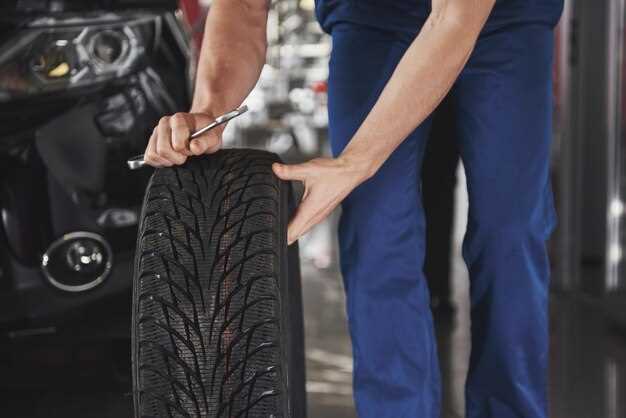
Selecting the right tires for your vehicle is crucial for both performance and safety. The right tires can significantly enhance your driving experience, providing the necessary grip for improved handling and stability. However, finding a balance between tire grip and longevity is often a challenging task for many drivers. Understanding the inherent trade-offs between these two vital aspects can lead to more informed decisions when it comes to tire selection.
Grip is essential for ensuring that your vehicle can maintain traction on various road surfaces, particularly under challenging conditions such as rain or snow. Tires with enhanced grip often feature softer rubber compounds and specialized tread patterns designed to maximize contact with the road. While this increased performance is advantageous, it typically comes at the cost of durability, as softer tires tend to wear out more quickly under regular use.
On the other hand, longevity refers to how long a tire can maintain its performance before showing signs of wear. Tires designed for longevity are usually constructed from harder rubber compounds, offering better resistance to abrasion and extending their life span. However, the trade-off can be a reduction in overall grip, particularly in extreme weather conditions or during high-performance driving scenarios. Achieving the perfect equilibrium between grip and longevity is essential for drivers who seek both safety and cost-effectiveness in their tire choices.
Understanding Tire Types for Optimal Grip

Selecting the right tire type is crucial for achieving the best grip on various surfaces. Different tires are designed to perform under specific conditions, and understanding these differences can significantly impact your driving experience. The primary types of tires include all-season, performance, winter, and off-road tires, each tailored to meet unique driving needs.
All-season tires are engineered for versatility, offering reasonable grip across a variety of weather conditions, including dry, wet, and light snow. However, their grip may not match that of specialized tires, especially in extreme conditions. For drivers seeking balanced performance year-round, all-season tires can be a solid choice, but their limitations should be considered when gripping is a priority.
Performance tires are designed for enhanced traction and responsiveness, particularly during sharp turns and high speeds. They feature a softer rubber compound that provides superior grip on dry and wet roads. However, this comes at the expense of tread longevity compared to all-season tires. Performance tires excel in warm conditions and should be chosen by those who prioritize handling capabilities over longevity.
Winter tires, also referred to as snow tires, use a softer rubber compound that remains pliable in cold temperatures. Their tread patterns incorporate deeper grooves and unique designs to enhance traction on snow and ice. For optimal grip in harsh winter conditions, winter tires are indispensable. However, their performance diminishes in warmer temperatures, necessitating a seasonal change for safety and efficiency.
Off-road tires are built to handle rough terrains, including mud, sand, and rocky surfaces. These tires typically feature a more aggressive tread design to provide better traction and stability over uneven ground. While they excel in off-road conditions, their performance on pavement can be compromised. Choosing off-road tires is best for those who frequently venture beyond paved roads.
To achieve optimal grip, it is important to match the tire type to your driving habits and environmental conditions. Evaluating your most common driving scenarios will help determine the best tire choice, ensuring safety, performance, and longevity. Always consider factors such as climate, terrain, and driving style when selecting tires to achieve the desired grip and performance balance.
Evaluating Tread Wear Indicators for Longevity

Understanding tread wear indicators is crucial for maintaining tire longevity and performance. Tread wear indicators, also known as wear bars, are small raised sections located in the grooves of a tire. Their primary function is to alert drivers when the tread depth has diminished to a level that compromises safety and performance.
To evaluate these indicators effectively, it is essential to monitor their visibility. When the tread wears down to the same level as these bars, it typically signifies that the tire has reached its legal minimum tread depth of 2/32 of an inch. At this point, tires may struggle to maintain traction, especially in wet conditions, increasing the risk of hydroplaning.
Regular inspections of the tread depth can help identify uneven wear patterns. Conditions such as misalignment, improper inflation, or worn suspension components can lead to uneven tread wear, thereby affecting the lifespan of the tire. If certain areas of the tire wear down faster than others, it can indicate underlying issues that need to be addressed to prolong tire life.
In addition to visual checks, utilizing a tread depth gauge can provide a quantitative assessment of wear. This tool not only helps measure the remaining tread depth but also allows for comparison across different tires for balanced wear. Maintaining a minimum tread depth ensures optimal grip and performance while promoting longevity.
Lastly, consider the type of driving conditions encountered regularly. Tires designed for specific environments, such as wet or off-road conditions, may wear differently. Understanding how tread wear indicators function in relation to these conditions enables drivers to make informed decisions regarding tire rotation, alignment checks, and timely replacements to ensure the longevity of their tires.
Seasonal Considerations Affecting Tire Performance
Seasonal changes significantly impact tire performance, influencing both grip and longevity. Understanding these effects is crucial for maintaining optimal driving conditions throughout the year.
In winter, cold temperatures can harden tires, reducing flexibility and grip. Specialized winter tires, designed with softer rubber compounds, provide better traction on snow and ice. They feature deeper treads and unique patterns that enhance grip in slippery conditions. Conversely, using summer tires in winter can lead to decreased performance, longer stopping distances, and increased risk of accidents.
During spring and fall, weather conditions can vary widely, including rain and fluctuating temperatures. All-season tires are designed to handle moderate weather changes, but they may compromise on grip during extreme conditions. Proper tread depth is essential for maintaining performance during wet conditions, as deeper grooves expel water and reduce hydroplaning risks.
Summer brings higher temperatures, which can increase tire pressure and cause excessive wear if not monitored. Summer tires, optimized for hot weather, provide excellent grip on dry roads but lose effectiveness in cold or wet environments. Regular inspections during this season are crucial to ensure that tires remain in good condition and that the tread does not wear unevenly.
Ultimately, choosing the right tires for each season involves understanding the specific environmental conditions and how they affect tire materials and designs. Regular assessment of tire performance in relation to seasonal changes can enhance safety and longevity, ensuring a balanced grip throughout the year.

